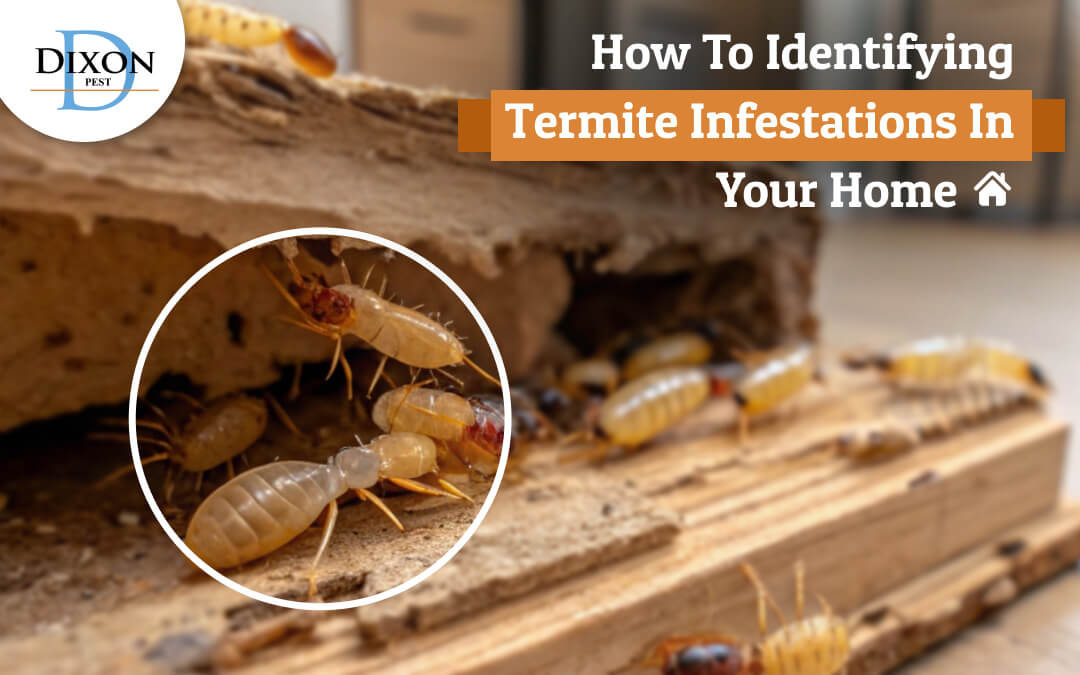Termites are among the most devastating insects that can infest your home, if left untreated, and cause thousands of dollars worth of damage. Early detection of a termite infestation is very important if you want to save your structure from damage and from making expensive repairs. In this article, we will take you through the typical signs of termite infestation, where to check for them, and what to do once you detect evidence of infestation. If you’re not sure how to know if you have termites, keep reading to discover the most important warning signs.
Warning Signs of Termite Infestation
1. Hollow-Sounding Wood
Knock on wood structures near your house. If they sound hollow or crumble, termites might have tunneled through the inside. It’s a common sign of termite damage.
2. Mud Tubes
Subterranean termites construct mud tubes on foundations, walls, and other areas to offer protection and moisture while traveling between their nest and food source.
3. Discarded Wings
Termites swarm when they’re colonizing. If you find discarded wings around windows, doors, or light sources, there may be an infestation close by.
4. Frass (Termite Droppings)
Drywood termites produce tiny, pellet-like frass. You might find little piles of sawdust-looking stuff, and this could indicate that you have termites.
5. Warped Doors and Windows
Wood becomes swollen with termite damage, and it might be hard to open or shut doors and windows.
6. Live Termites Found During Remodeling
If you find living termites when repairing or remodeling some sections of your home, that’s definite proof of an active infestation.
7. Damaged Drywall, Bubbling Under Paint or Wallpaper
Actual damage to drywall, resulting in bubbling or warped surfaces of paint and wallpaper, maybe a hint of termites.
8. Moldy Scents
A persistent moldy or musty smell in your home can sometimes indicate a termite infestation since termites produce moisture buildup within walls.
9. Clicking Sounds
Soldier termites slam their heads on wood or rattle their bodies to alert the colony to danger, leaving behind faint clicking sounds within walls or in wooden structures.
Where to Look for Termites
Termites may hide in several areas, including:
- Basements and crawl spaces – Termites are attracted to dark, damp conditions.
- Wooden structures – Inspect furniture, decks, fences, and beams.
- Attics and ceilings – Wooden beams and rafters in contact with attic areas can harbor termites.
- Near water sources – Spaces, where there is water leakage, high humidity, or inadequate air ventilation, tend to draw termites.
What to Do If You Find Termites
You can use DIY termite detection or advanced termite detection methods to assess and address the infestation.
DIY Termite Detection Strategies
Early detection of termites may prevent termite damage. The following are some do-it-yourself tips homeowners can utilize to detect potential infestations:
1. Check Wooden Objects
Inspect wood surfaces in and around your house, such as furniture, doors, and window frames. Examine for minute holes, tunnels, or a hollow sound upon tapping.
2. Use a Flashlight and Screwdriver
Inspect your basement, crawl space, and foundation with a flashlight. Use a screwdriver to probe questionable areas gently—if the wood feels soft when probed, there can be termites.
3. Monitor Mud Tubes
Look for mud tubes on your home’s walls and foundation. Break a part of the tube; if there are termites inside or the tube has been repaired within a few days, you have an active infestation.
4. Set Up Termite Traps
Cardboard traps can lure termites as they feed on cellulose. Place wet cardboard in suspected areas and see if termites surround it after a few days.
5. Hear Clicking Noises
At night, when the place is still, listen attentively to walls and wooden structures for soft clicking noises that termites make.
Advanced Termite Detection Methods
Although DIY techniques can be useful, professional detection techniques yield better results. Some of the advanced methods employed by termite inspectors are:
1. Thermal Imaging Cameras
Infrared cameras identify the heat patterns from termite colonies, enabling experts to detect hidden infestations behind walls or floors without taking invasive actions.
2. Moisture Meters
Termites love moist places. A moisture meter assists in detecting areas of high moisture content that may invite termite infestation.
3. Acoustic Sensors
Specialized equipment plays back termite movement sounds within wood, allowing it to be more easily located within walls or structural beams.
4. Borescope Inspection
A borescope is a miniature camera placed into small holes in walls or furniture, enabling professionals to see visually secret termite activity.
5. Canine Termite Detection
Dogs can sniff out termite infestations with incredible precision, enabling colonies to be detected even in inaccessible locations.
Related: Tips To Choose a Termite Control Company
DIY vs. Professional Termite Detection
DIY Termite Detection
- Affordable and effective for early detection.
- Dependent on visual indicators such as mud tubes, frass, and hollowed wood.
- Low accuracy, as termites tend to hide inside walls and buildings.
Professional Termite Detection
- Employing sophisticated equipment such as thermal imaging, moisture readers, and expert dogs.
- More accurate and extensive in detecting concealed infestations.
- Used for large-scale infestations or repeated termite issues.
Conclusion
Early detection is key to preventing severe termite damage. By staying vigilant and scheduling regular inspections, you can protect your home from these destructive pests. If you suspect an infestation and need a termite inspector in South Carolina, don’t wait—contact Dixon Pest Solutions for a thorough inspection and effective treatment options.

